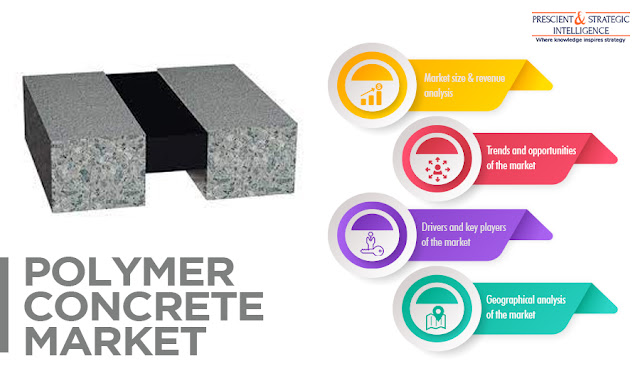How Will Infrastructure Investment Augment Polymer Concrete Sale?
The Asian Infrastructure Investment Bank (AIIB) committed $60 million to the STIC Asia Infrastructure Innovation Fund in November 2021. The fund will help small and medium-sized companies involved in smart city, transport and logistics, green energy infrastructure, social infrastructure, and digital infrastructure development prosper in the Republic of Korea, Southeast Asia, and South Asia. Likewise, the Government of Canada signed the Integrated Bilateral Agreement for the Investing in Canada Infrastructure Program (ICIP) with British Colombia in 2018 to invest $3.917 billion for the next 10 years in the infrastructure of the latter.
Thus, the increasing investments being made in infrastructure development will help the polymer concrete market witness a CAGR of 7.1% during forecast period. According to P&S Intelligence, the market revenue will rise from $1,975.8 million in 2017 to $2,964.0 million by 2023. Additionally, the rising focus on repair and rehabilitation of existing structures will also augment the usage of polymer concrete globally. For example, the Bipartisan Infrastructure Deal of the U.S. aims to repair and rebuild roads and bridges of the country while focusing on climate change mitigation, equity, resilience, and safety of all users.
In recent years, polymer concrete producers have focused on product launches and geographical expansions to cater to the needs of construction companies. For instance, in February 2016, Fosroc International Ltd. introduced the Thioflex 555, a new joint sealant, used for maintaining and sealing concrete roads, aprons, hardstanding areas, and runways. Other companies opting for these measures include Sauereisen Inc., BASF SE, ErgonArmor, Crown Polymers Corporation, Sika AG, Forte Composites Inc., and Dudick Inc.
Globally, the North American region dominated the polymer concrete market in the last few years, and it will continue to do so in the upcoming years as well. This can be primarily credited to the increasing focus on the restoration and repair of existing structures in the region. For instance, Canada is working toward restoring the Place George-V bridge of Quebec and rehabilitating the Arthur Meighen Building of Toronto, Ontario. Moreover, the presence of eminent polymer concrete producers in the U.S. and Canada also facilitates the usage of this construction material in the region.
Therefore, the mounting investments being made in the infrastructure sector and rising infrastructure rehabilitation and repair activities will facilitate the adoption of polymer concrete in the upcoming years.



Comments
Post a Comment